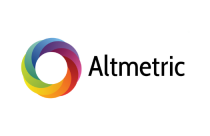ORCID Vs. ISNI: Is There Room for Both?

The Case for Unique Identifiers
The need for unambiguous identification of authorship goes beyond simply avoiding the problem of how many “John Smiths” there are in the world. Unique identification of authorship also facilitates accurate assignment of rights, payment of royalties, and sharing of content among diverse databases.
Trade identification systems for books (International Standard Book Number, ISBN) and Journals (International Standard Serial Number, ISSN) have set the standard for supply chain management of published materials. However, with the rapid growth of academic research journals targeted at increasingly narrow specialty niches, the potential for confusion over authorship increased accordingly.
ORCID
Launched in October 2012, the Open Researcher and Contributors ID repository (ORCID) wasn’t the first large-scale attempt to create a unified academic researcher ID system. Previous attempts had failed as a result of conflicts of interest over perceived proprietary ownership and lack of international scale needed to reach the minimal critical mass for financial and operational viability.
ORCID’s non-profit status and comprehensive support framework from academic institutions, professional organizations, publishers and funding agencies, does suggest that it will survive for the long term.
As the name implies, the ORCID 16-digit ID code system focuses exclusively on scholarly research, and access for individual researchers is currently free.
ISNI
Published in early 2012, the International Standard Name Identifier (ISNI) was created as an ISO-certified global standard repository for a broader audience of creative artists, including producers, performers, writers, artists, and researchers.
The Registration Authority (RA) for ISNI is a non-profit organization, as required by ISO standards. Individual ISNI numbers are registered through an agency (Bowker) and currently cost $25.
Betamax or VHS: What Does the Future Hold?
Since both systems utilize the same 16-digit ID code template, and have publicly committed to supporting the linkage of data across multiple databases, the need to work together to prevent overlap is obvious.
In January 2014, both parties signed a Memorandum of Understanding for a strategic partnership that included the development of ISNI2ORCID—a software tool that allows ORCID registrants to import their ISNI information into their ORCID profile.
Since both systems serve different communities, the future looks bright for both repositories. The distinct culture of academic research, and the detailed vocabulary that supports it, should support the long-term viability of a separate repository rather than forcing it to comply with the market leader’s platform (as Betamax had to do with VHS). However, with assignments for ISNI reaching over 8 million within the first two years, as compared to less than one million for ORCID, ISNI will clearly be setting future development standards in this strategic partnership.









